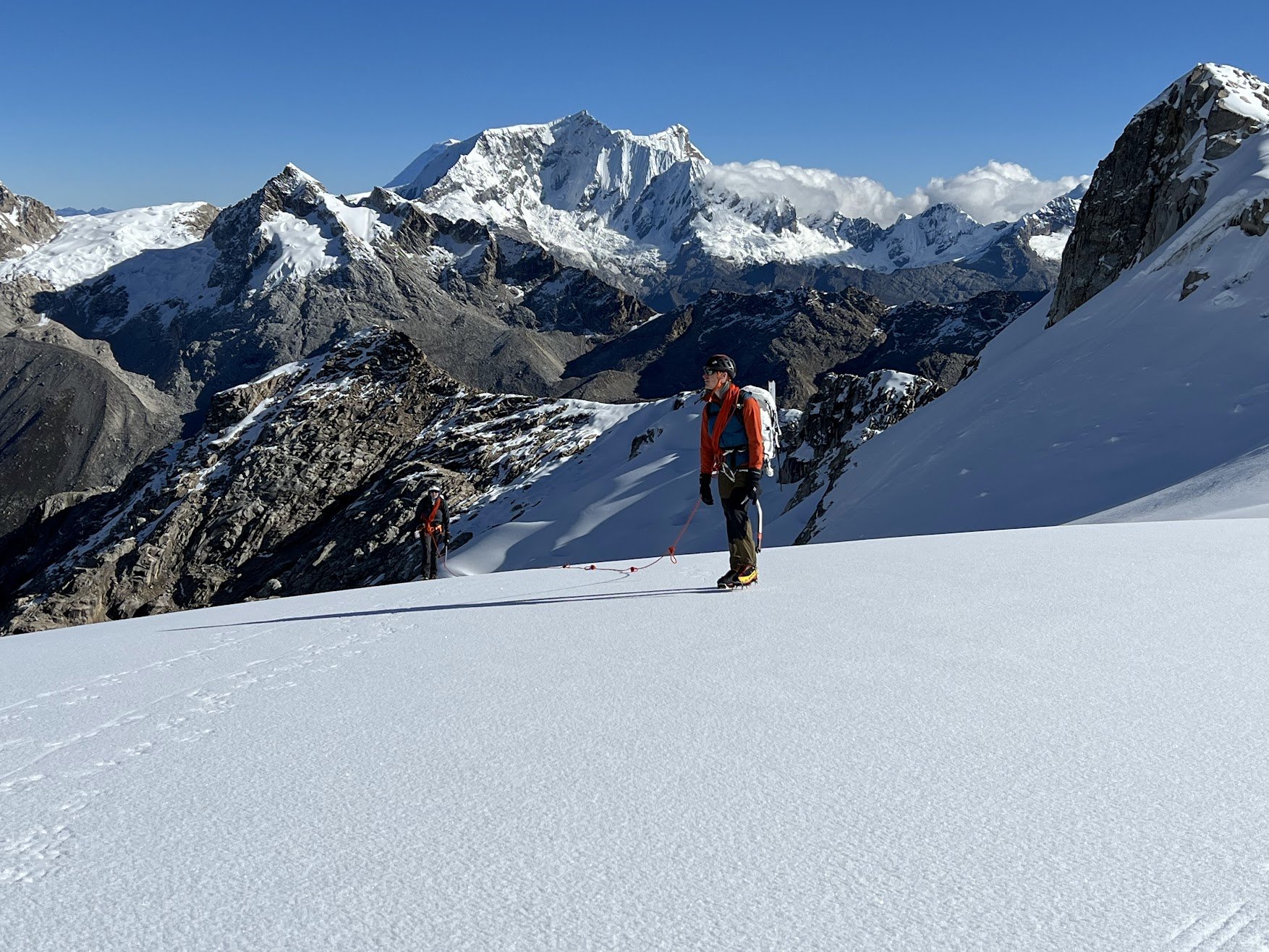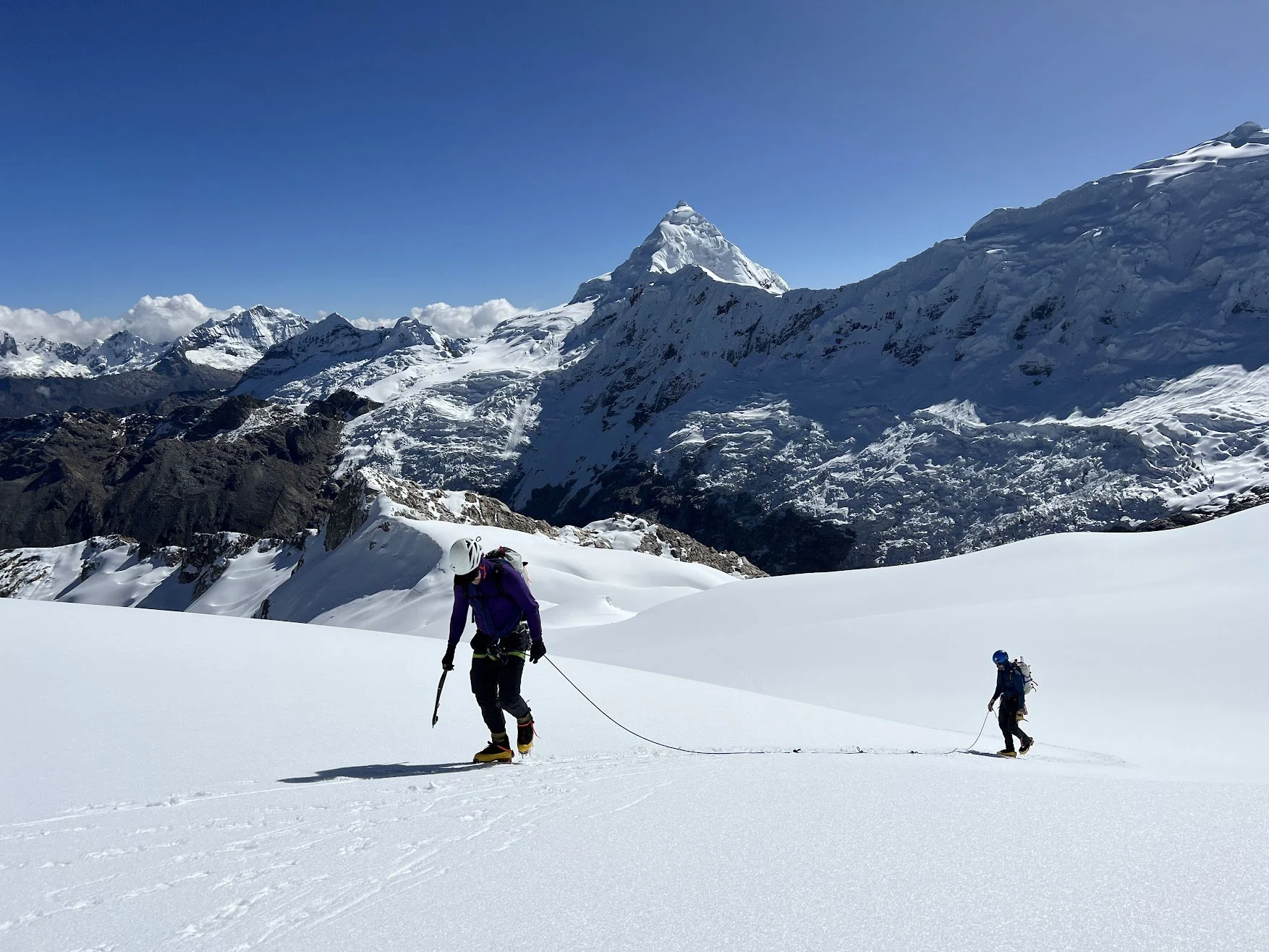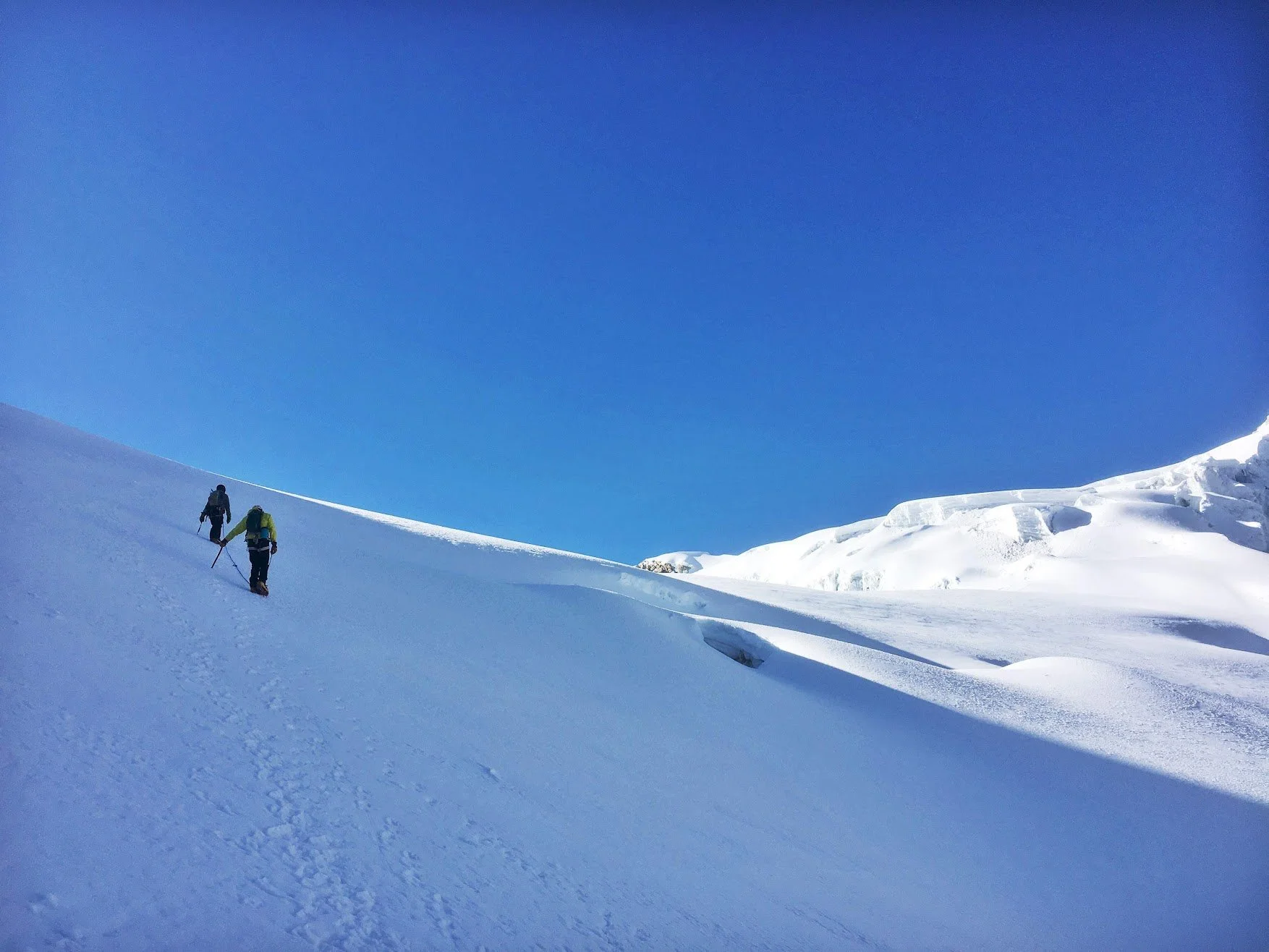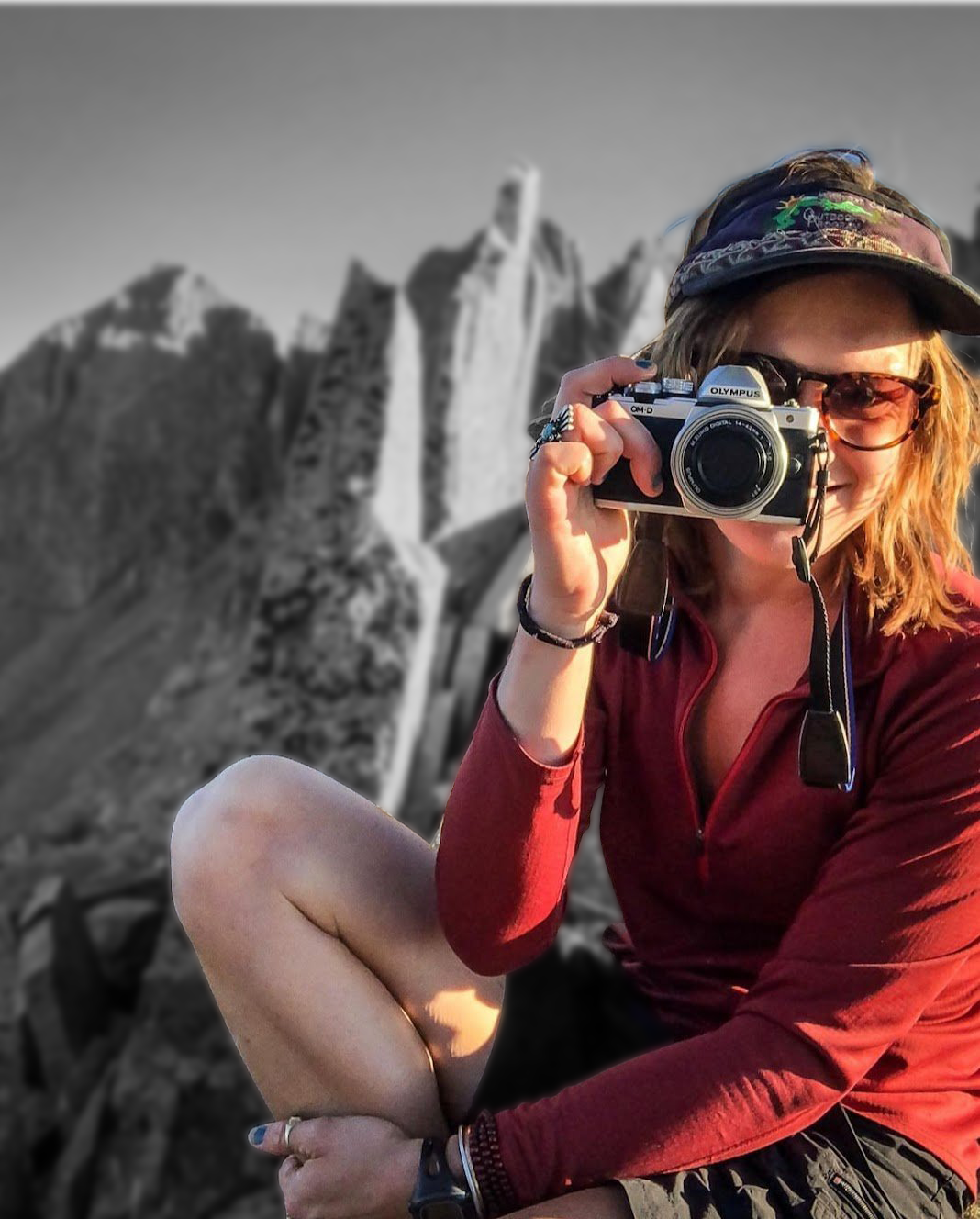
North Cascades Intro to Mountaineering
North Cascades
Intro to Mountaineering
Single:$1699 / person
Intro
North Cascades, Washington
5-Days
This program is designed for climbers seeking an intro to mountaineering experience and is the perfect first step in learning skills from camp craft to glacier travel. It’s the perfect program to help propel you into our more advanced alpine climbing seminars and international trips.
This course and curriculum have served as a springboard to many climbing careers and have developed a foundation of skills for many independent climbers.
-
-July 25-29 _Full

-
This program is designed for beginner or intermediate climbers who wish to develop strong fundamental skills in all aspects of snow and glacier climbing.
It serves as a prerequisite for many of Smile’s intermediate-level climbs and is a stepping stone to more technically difficult mountains, including Denali and high-altitude climbs in South America.
This course and curriculum have served as a springboard to many climbing careers and have developed a foundation of skills for many independent climbers.
-
This course takes place in the North Cascades on Peaks such as Mt. Shuksan, Eldorado Peak, Sahale Peak, and others throughout the Cascades
The focus of this program is to learn and increase technical knowledge/skills in all aspects of snow and alpine climbing including:
+Glacier travel
+Rope/belay techniques
+Crevasse rescue
+Route finding
+Self-arresting techniques
+Rappelling
+Cramponing
+Snow Anchors
Pre Couse Trip Call:
When the roster is full- the team will meet with their guide via a Google Meet call to discuss gear selection for the course, meet our new teammates, and discuss the seminar, answering any questions the group has.
Day One:
We will meet at a local park close to the North Cascades in Sedro-Woolley to gear prep, learn some packing techniques, and allow some time if people need to grab any last-minute items. This will also be a good time to pack group gear. We reconvene and carpool to the trailhead.
An integral part of mountaineering and expeditionary climbing is being able to set up a protected and secure camp in an extreme environment. As a group, we’ll practice these skills. Guides discuss the importance of personal maintenance, hygiene, sleeping in cold environments, and Leave No Trace principles, as well as address any student concerns. Finally, instruction on proper hydration, including efficient snow-melting protocols, nutrition, and backcountry cooking techniques will be addressed.
We will then spend the remaining day reviewing knots & hitches. Evening dinner and sleep.
Day two:
Glacier day! We will start the day with conversations surrounding how we travel on a glacier and the considerations for doing so.
Good footwork, balance, and rest techniques are invaluable skills that we use throughout the course. Guides then introduce the use of the ice axe and students conclude by practicing a variety of self-arrest positions.
After this, we develop rope work skills: coiling, storing, and changing the length of the climbing rope. If conditions and time permits, we go for a short glacier tour, winding our way through seemingly bottomless crevasses in both classical and echelon formations. Here, the emphasis is on proper rope interval, shortening and lengthening the rope, communication, route finding and hazard assessment.
Day Three:
We’ll demonstrate a variety of snow and ice anchors useful for belaying, running protection, and rescue scenarios. Once students are comfortable constructing a variety of different anchor types and styles, we put it all to the test.
We fully weight and test all of the student anchors to ensure they are constructed properly for our intended purpose.
Then we put the anchors to the test. Climbers belay and rappel off of the anchors they construct. We teach a variety of belaying and rappelling techniques that are useful in mountaineering and vertical climbing. We introduce a variety of hauling systems, with an emphasis on understanding the mechanical advantage each system employs.
Day Four:
With the skills developed in the previous days – knots, prusiks, rope handling, anchor construction, belaying, and mechanical advantage systems – students should now have the necessary skills and comfort to execute crevasse rescue. Crevasse rescue is an essential skill and considerable time and emphasis will be placed on practicing it in this course.
Our first run will be on the surface but then it is expected that each person demonstrates proficiency in holding a real-life fall into a crevasse and performing an actual rescue.
At this time, students also have the opportunity to practice ascending out of a crevasse on their own with the use of their prusiks. This gives a much more realistic feel of what self-rescue is all about.
Crevasses can be a hazardous environment, and care must be taken to mitigate the risks properly. Guides emphasize climber well-being. Nevertheless, this is an extremely memorable and rewarding day.
Day 5
At this point, students should have made the transition to becoming valuable members of a rope team and the group is now ready to push higher into the mountains. Depending on conditions and weather, we’ll use this day to go for the summit.
The most important skills we’ll learn are how to prepare, plan, and execute the summit climb. Developing a route plan, assessing the hazards, preparing one’s summit pack, and climbing and descending competently through glaciers to an icy Cascades summit.
It is a rewarding experience with breathtaking views in every direction. It is also a demanding day, both physically and mentally, which provides great training for more advanced objectives students may encounter later in their climbing careers.
Finally, we break down camp following our Leave No Trace principles hike back down to the trailhead.
It is often customary to have a group meal back in the first town we come to and celebrate five great days spent in the mountains!
-
NORTH CASCADES: GETTING THERE
North Cascades National Park, Washington State is located 2 hours Northeast of Seattle. The Pacific Northwest is beautiful and thriving both in its cities and its parks. Make sure you plan to spend some time in town before and after your SMG trip. Bellingham and even closer Sedro-Woolley serve as the launching points for all of our climbs in North Cascades National Park.
The best option for flying to the area is through Seattle, WA. Many airline options exist, and because Sea-Tac is a major airport and Seattle a major travel destination there are typically many flights to choose from.
You will need to organize a rental car to drive to Bellingham or Sedro from Seattle. Typically in the summer months, you can choose any type of vehicle.
There are many great hotels, suites, and vacation rentals for you to stay in while you’re in the area. Give our office a call at 410-982-8282 if you have any questions about what would suit you best for this trip! Below are just a few options catering to different lodging styles and preferences in Bellingham:
VRBO
Sedro Woolley also has a number of great hotels, suites, and vacation rentals for you to stay in while you’re in the area. Give our office a call at 410-982-8282 if you have any questions about what would suit you best for this trip!
Three Rivers Inn Hotel

-
FOOTWEAR
+Sticky Rubber Approach Shoes Optional for the
hike to highcamp
+Socks
UPPER LAYERS
+Synthetic T-shirt
BOTTOM LAYERS
GLOVES/HATS
+Buff
BACKPACKS
+45-55L Hike-in and Climbing Pack (one-pack option)
ACCESSORIES
+Sunglasses, Sunscreen, Lip Balm, Sun Hat
+Nalgene, Minimum 1.5L
+Climbing Snacks: 100 calories an hour!
CAMPING KIT
EQUIPMENT
+Belay Device w/Locking Carabiner
+3 Additional Locking Carabiners
+120cm Sewn Sling w/ Non-Locker
+Autoblock Cord w/ Non-Locker
Smile Mountain Guides can supply rock climbing gear including helmets, harnesses, ropes, cams, slings, carabiners, belay/rappel devices, ice axes, and crampons. *We do not provide alpine boots
Check out our Alpine Climbing Fundamentals Seminar for our entry-level-glacier alpine climbing program.
-
BREAKFAST (~300 – 600 CALORIES) X 4
Having a hot breakfast is important, especially in cold weather environments. Most climbers go with instant or quick-cooking hot cereals like oatmeal or Cream of Wheat, or dry cereals and powdered milk mixed with hot water. All of these meals taste better and provide more calories when fortified with dried fruits, nuts, honey, butter, and even chocolate chips! Tastier (and heavier!) breakfast ideas are included below.
For your course, you should have 4 breakfasts. About half of these should be basic meals to decrease weight on the mountain and the remaining can be more luxurious. Don’t forget your hot drinks!
Breakfast Ideas
– 1 cup of granola + freeze-dried fruit + 3 tablespoons of powdered milk mixed with hot water
– 2 packs of instant oatmeal + dried fruit + nut butter
– Dehydrated breakfast meal (check serving and calories)
– 2 packs of instant grits + bacon crumbles + cheese + butter + salt and pepper to taste
– 2-4 powdered eggs + 4-6 strips precooked bacon + tortilla
LUNCH (~800 – 1600 CALORIES) X 5
Lunch begins just after breakfast and ends just before dinner. It is the most important meal of the day and needs to have enough variety to keep you happy over your trip. Continuous eating of small quantities will keep up your energy levels for the whole day, especially on big travel/summit days where we will be on the move for 8 hours or more.
For your course, you need lunch food for 5 days. Determining the amount of lunch food to bring is difficult to gauge on your first mountaineering expedition. General guidelines are given below. The rule many guides work with is the weight of your lunch food should be equivalent to the weight of your breakfast and dinner food added together.
Each day it’s nice to have a “real” food item. You may consider some of these tasty sandwich/wrap combinations:
1. Start with a hearty bread product: flatbread, bagel, naan, flour tortilla, croissant, or pita pocket
2. Add protein: hard cheese, Laughing Cow cheese wedges (no refrigeration needed), cured meat, black beans or hummus, nut butter (we like Trail Butter because it comes in a squeeze pouch), tuna pouch, or smoked salmon
3. Add flavor/texture: dried fruit, chips, hot sauce, mustard, or pesto. Also consider, a hearty pre-made sandwich, leftover pizza, or a burrito for the first day of the course
In addition, pack snack foods to supplement any sandwiches or wraps, such as:
– Nuts (cashew and almonds personal favorite – can buy in 1lb quantities at Trader Joe’s)
– Jerky – beef, turkey, bacon, salmon, and tofu jerky are all great options
– Dried fruit (Trader Joe’s has an excellent selection prepackaged by weight)
– Peanut butter filled pretzel chunks
– Trail mix
– Cheese sticks/squares
– Plantain chips
For summit day or big travel days (approximately 2 on a 3-day course) focus on energy-rich food. On these days we travel for roughly an hour between breaks. At each break, you should be eating 200-300 calories (or about 1 energy bar). These days can have 4-8 breaks. These foods include:
– Energy bars – focus on bars with real ingredients. We love Probars, Pure Organic, Kit’s Organic, Larabar, and Chia Bars. If you are ambitious, try making your own!
– Energy chews (Shot Bloks or the like)
– GU’s, Cliff Shots, etc.
– Candy bars (Snicker’s are a favorite of most climbers)
– Gummy bears
DINNER (~800 – 1200 CALORIES) X 4
For the greatest preparation and cooking ease, freeze-dried food is an option. Usually, these foods only require adding boiling water and are ready within minutes. Downsides to freeze-dried food are the cost, an increase in single-use packaging which must be packed out, uninteresting flavors or textures, gut issues from poorly re-hydrated meals, constipation, etc.
With slightly more effort but vastly reduced cost, any supermarket can be tapped for a wide variety of wilderness-ready prepared foods. Items like Knorr rice or pasta entrees in envelopes cook in 5 to 10 minutes, and are very tasty. It is best if you experiment ahead of time at home so that you know which you prefer. For those with a culinary creative streak, very tasty meals can be made up from scratch with only a minimum of additional effort. Items such as quick brown rice, quick or instant white rice, bulgur, instant precooked or dried beans, dehydrated vegetables, packaged or bulk sauce mixes, smoked salmon, exotic cheeses, and whatever spices and herbs you like or want to experiment with can be combined for tasty meals.
You will need 4 dinners for your course. Many guides bring soup packets, like instant miso soup, for each meal (unless the meal is already soup-based). These make great pre-dinner hot drinks and help us hydrated. Don’t forget your hot drinks!
Dinner Ideas
– 1 packet instant ramen noodle soup + sweet and spicy jerky (shredded) + parmesan cheese + dehydrated vegetables
– 1 pre-pouched Indian Meal (we like Tasty Bites) + boil in the bag rice + coconut oil (vegetarian/vegan depending on meal choice)
– 1 box mac and cheese + sundried tomatoes + tuna packet + red pepper flakes
– 1 box cous cous + sundried tomatoes + pine nuts + chunks of salami
PREPARATIONS FOR THE INTRO TO MOUNTAINEERING SEMINAR
Technical Experience
No technical climbing experience required,
Fitness
Excellent physical fitness is required. Climbers must be able to hike and climb for many hours while carrying a pack. Training for Advanced Alpine Climbing is a great fitness program to develop a strong alpine climbing base. 50% intensity of this program is a good marker of fitness for our Intro to Mountaineering Program.
Meet The Team
FAQ’s
Intro to Mountaineering
The answers to our most commonly asked questions for the Intro to Mountaineering seminar.
-
PRICE INCLUDES
+Guide fees (4:1 climber-to-guide ratio)
+Park fees
+Group equipment such as ropes, snow and ice protection etc.
+Liquid fuel for white gas stoves (canister fuel is available for purchase)
+Group cook craft items
+SMG Buff
PRICE DOES NOT INCLUDE
+Personal equipment (see Gear List)
+Transportation
+Meals – Part of our ethic is to teach self-sufficiency in the mountains, which includes backcountry cooking. See our suggested Food Plan Below.
+Hotels/lodging in Seattle, Bellingham, or Sedro-Woolley
+All expenses incurred in the event of early departure (evac fees, extra hotel nights, etc.)
+Trip cancellation insurance
-
Smile Mountain Guides provides the following gear.
Technical:
+Helmets
+Harness
+Ice Axe
+Crampons
+Ropes and Glacier Travel Tools
Camping:
+Tents
+Group Stoves
+Critter Bear Bags
Smile Mountain Guides does not provide alpine climbing boots for this program, food and personal kitchen items, water bladders, and clothing needed to be comfortable in the mountain environment.
-
Smile focuses on small groups and ratios that meet the professional mountain guiding standard. These programs have a 4:1 ratio and we can accommodate a maximum group size of 8 climbers with 2 guides.
-
Please click here to review our domestic cancellation policy.
-
Yes! A large portion of our business is designed around custom adventures.


















